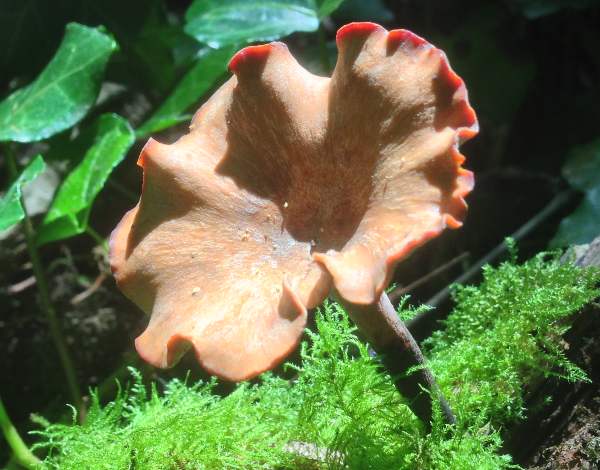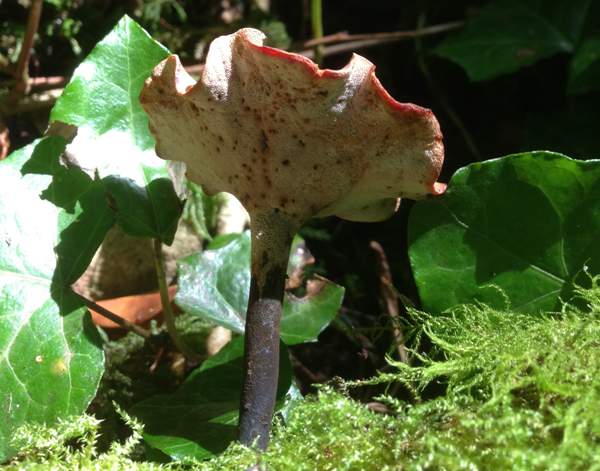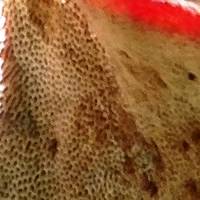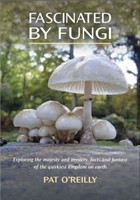Polyporus leptocephalus (Jacq.) Fr. - Blackfoot Polypore
Distribution - Taxonomic History - Etymology - Identification - Culinary Notes - Reference Sources
Phylum: Basidiomycota - Class: Agaricomycetes - Order: Polyporales - Family: Meripilaceae

Description
The stem of this polypore is nearly always more or less centrally attached to the fertile underside iof the cap, and the lower part of the stem blackens at maturity - a helpful distinguishing feature that give rise to the common name.
Distribution
Fairly common and widespread in Britain, this distinctive polypore also occurs in most mainland European countries and is recorded from other parts of the world including North America.

Taxonomic history
The basionym of this species dates from 1778, when Dutch naturalist Nicolaus Joseph von Jacquin (1727 - 1817) described this polypore and gave it the binomial scientific name Boletus leptocephalus. It was Swedish mycologist Elias Magus Fries who, in 1821, transferred this species to the genus Polyporus, thereby establising its currently-accepted scientific name.
Synonyms of Polyporus leptocephalus include Boletus leptocephalus Jacq., Boletus elegans Bull., Boletus nummularius Bull., Coltricia leptocephala (Jacq.) Gray, Boletus varius Pers., Grifola varia (Pers.) Gray, Polyporus nummularius (Bull.) Pers., Polyporus elegans (Bull.) Trog., and Cerioporus leptocephalus (Jacq.) Zmitr.
Etymology
Polyporus, the genus name, comes from poly, meaning many, and poros, meaning passage - in this instance the tubular holes known as pores on the fertile (spore-producing) underside of the cap and within which spores develop. The specific epithet leptocephalus comes from the Greek adjective lept- meaning slim or slender, and -kephale meaning a head - hence by implication this polypore has a slim head or cap.
Identification guide
 |
FruitbodyFruitbody comprises a slender stem and a thin-fleshed cap connected either centrally, eccentrically or occasionally laterally to the stem. CapsCaps are generally 2 - 6cm but can grow to 10cm in diameter and often develop scalloped margins. The radially fibrous upper surface is yellowish brown, and beneath the cuticle the thin flesh is white. |
 |
Tubes and PoresThe fertile undersurface of the cap comprises shallow tubes typically 1 - 3mm deep and usually rounded; they terminate in pale cream pores spaced at 4 to 6 per mm which are decurrent to the stem. The pores turn ochre when old or if bruised. Stems of this polypore are whitish, turning ochre with age. The lower part of the stem is nearly always black - a useful distinguishing feature. |
SporesCylindrical or slightly allantoid, smooth, 8-11 x 3-4μm; inamyloid. Spore printWhite. |
|
Odour/taste |
Odour not distinctive; taste slightly bitter. |
Habitat & Ecological role |
Saprophytic, usually on timber from beech trees but occasionally on other hardwoods. |
Season |
Annual; late spring, summer and autumn, but in dryish locations these tough polypores often persist throughout the year. |
Similar species |
Polyporus ciliatus is similar but does not have a black stem base. Polyporus brumalis is similar but has larger pores and does not have a black stem base. Polyporus durus had a red-brown cap and generally has larger caps. |
Culinary Notes
This polypore fungus is too tough and insubstantial to be of any culinary interest.
Reference Sources
Fascinated by Fungi, 2nd Edition, Pat O'Reilly 2016, reprinted by Coch-y-bonddu Books in 2022.
BMS List of English Names for Fungi
Dictionary of the Fungi; Paul M. Kirk, Paul F. Cannon, David W. Minter and J. A. Stalpers; CABI, 2008
Taxonomic history and synonym information on these pages is drawn from many sources but in particular from the British Mycological Society's GB Checklist of Fungi.
Acknowledgements
This page includes pictures kindly contributed by Simon Harding.
Fascinated by Fungi. Back by popular demand, Pat O'Reilly's best-selling 450-page hardback book is available now. The latest second edition was republished with a sparkling new cover design in September 2022 by Coch-y-Bonddu Books. Full details and copies are available from the publisher's online bookshop...

